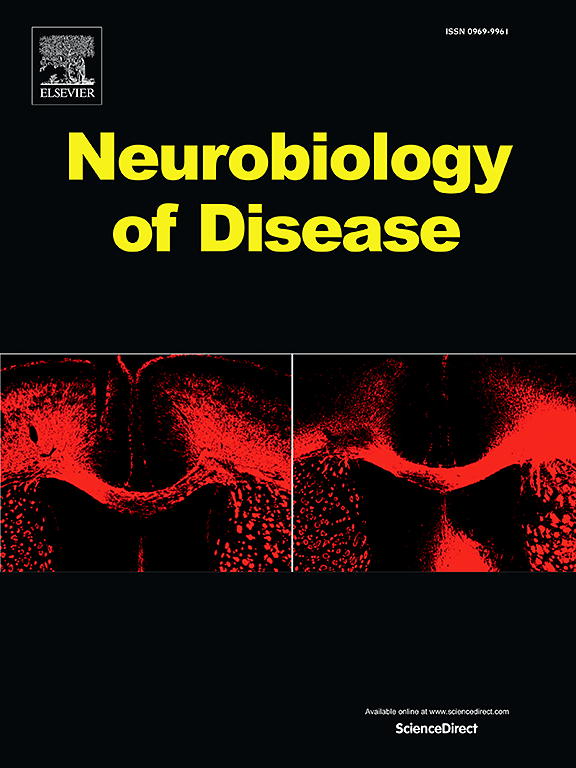Unravelling a mechanistic link between mitophagy defect, mitochondrial malfunction, and apoptotic neurodegeneration in Mucopolysaccharidosis VII
IF 5.1
2区 医学
Q1 NEUROSCIENCES
引用次数: 0
Abstract
Cognitive disability and neurodegeneration are prominent symptoms of Mucopolysaccharidosis VII (MPS VII), a lysosomal storage disorder caused by β-glucuronidase enzyme deficiency. Yet, the mechanism of neurodegeneration in MPS VII remains unclear thereby limiting the scope of targeted therapy. We aimed to bridge this knowledge gap by employing the β-glucuronidase-deficient (CG2135−/−) Drosophila model of MPS VII. Taking cues from our initial observation that the adult CG2135−/− flies displayed enhanced susceptibility to starvation, we investigated potential impairments in the autophagy-lysosomal clearance machinery in their brain to dissect the underlying cause of neurodegeneration. We found that both autophagosome biogenesis and lysosome-mediated autophagosomal turnover were impaired in the CG2135−/− fly brain. This was evidenced by lower Atg8a-II levels, reduced Atg1 and Ref(2)P expression along with accumulation of lipofuscin-like inclusions and multilamellar bodies. Mitophagy was also found to be defective in their brain, resulting in buildup of enlarged mitochondria with distorted cristae and reduced membrane potential. This, in turn, compromised mitochondrial function, as reflected by drastically reduced brain ATP levels. Energy depletion triggered apoptosis in neuronal as well as non-neuronal cells of the CG2135−/− fly brain, where apoptotic dopaminergic neurons were also detected. Interestingly, resveratrol treatment corrected the mitophagy defect and prevented ATP depletion in the CG2135−/− fly brain, providing an explanation for its neuroprotective effects. Collectively, our study reveals a pharmacologically targetable mechanistic link between mitophagy defect, mitochondrial malfunction, and apoptotic neurodegeneration in MPS VII.

求助全文
约1分钟内获得全文
求助全文
来源期刊

Neurobiology of Disease
医学-神经科学
CiteScore
11.20
自引率
3.30%
发文量
270
审稿时长
76 days
期刊介绍:
Neurobiology of Disease is a major international journal at the interface between basic and clinical neuroscience. The journal provides a forum for the publication of top quality research papers on: molecular and cellular definitions of disease mechanisms, the neural systems and underpinning behavioral disorders, the genetics of inherited neurological and psychiatric diseases, nervous system aging, and findings relevant to the development of new therapies.
 求助内容:
求助内容: 应助结果提醒方式:
应助结果提醒方式:


